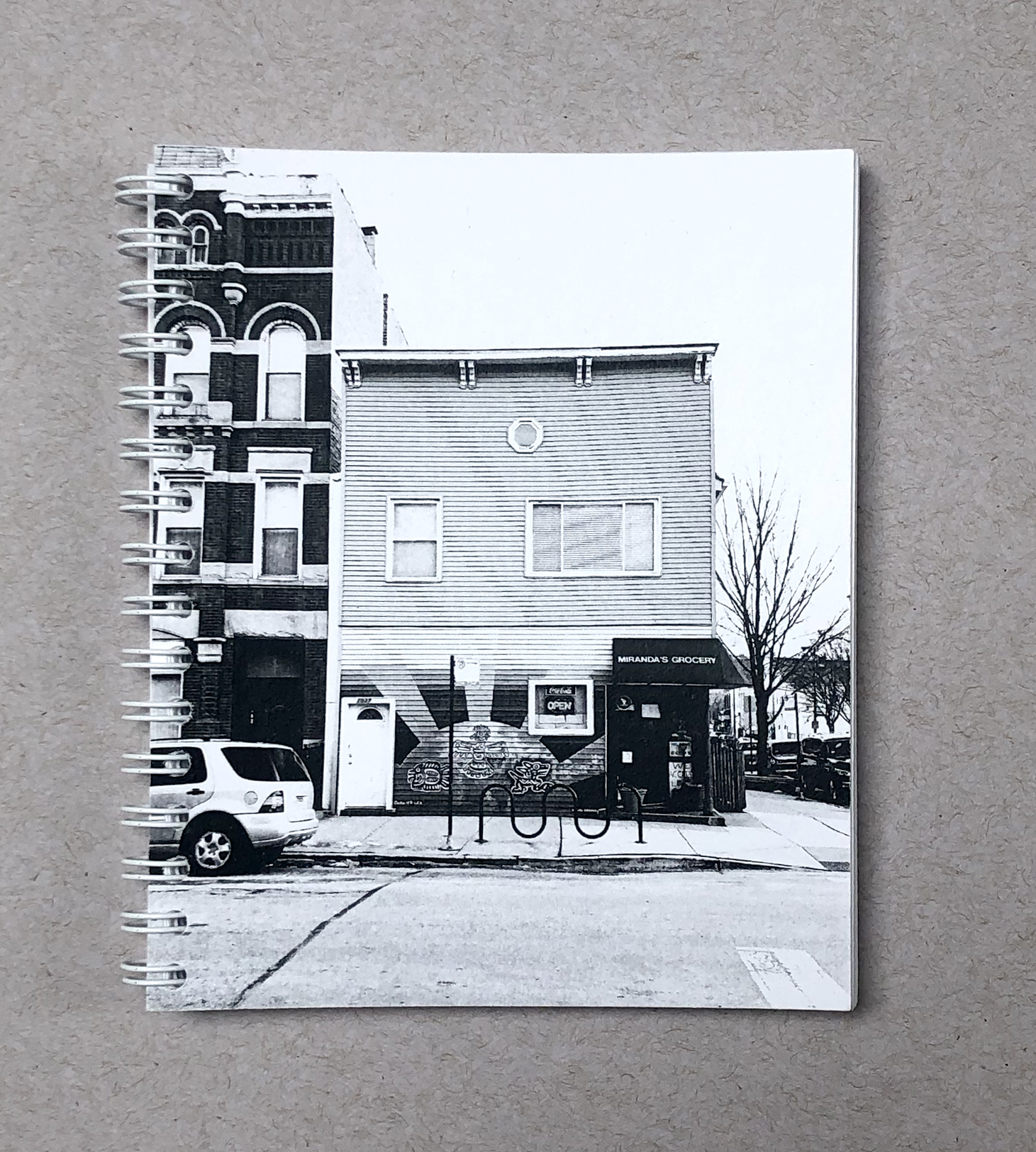
“Death of a Pilsen Gift Shop,” 2019.
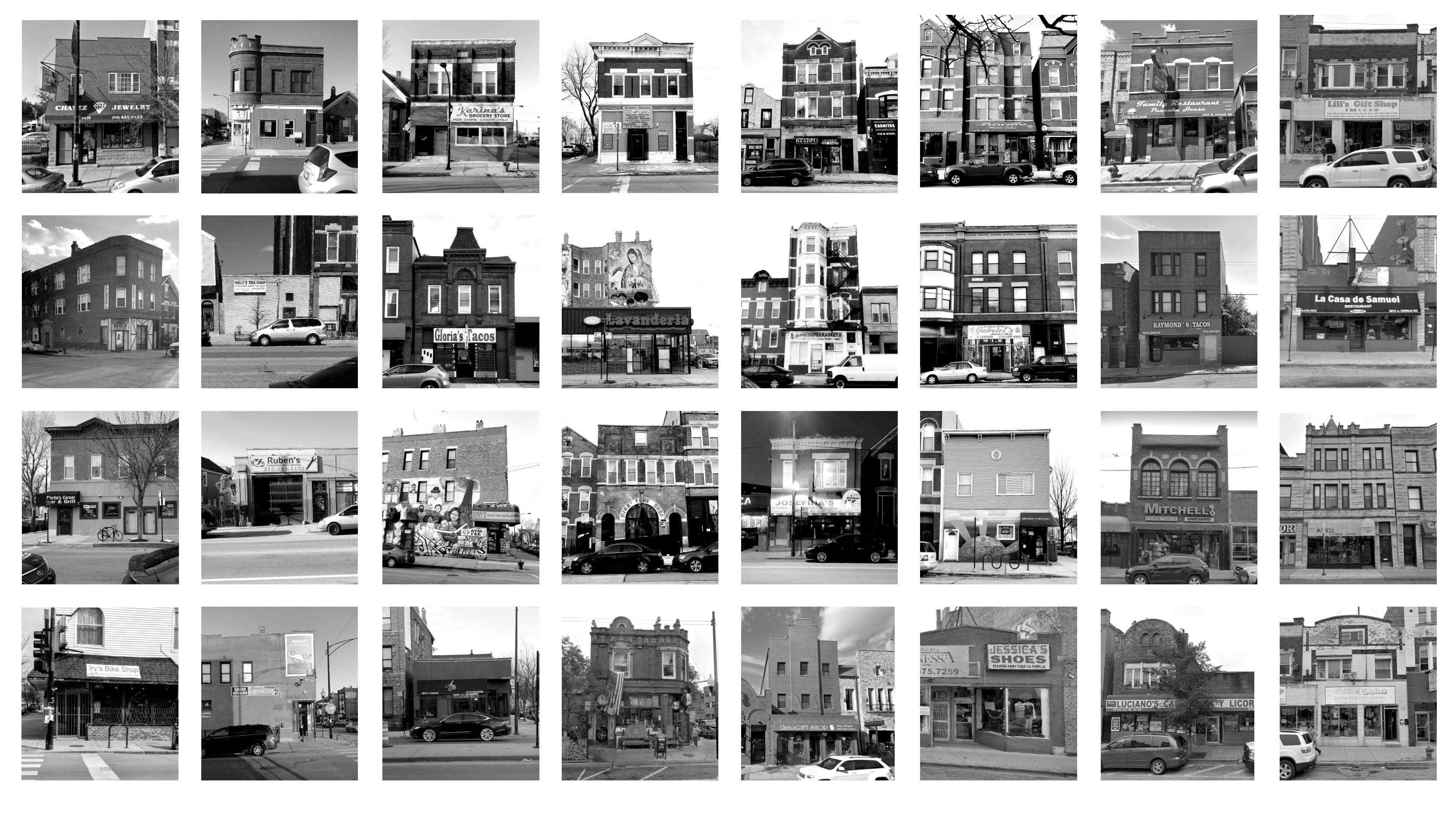
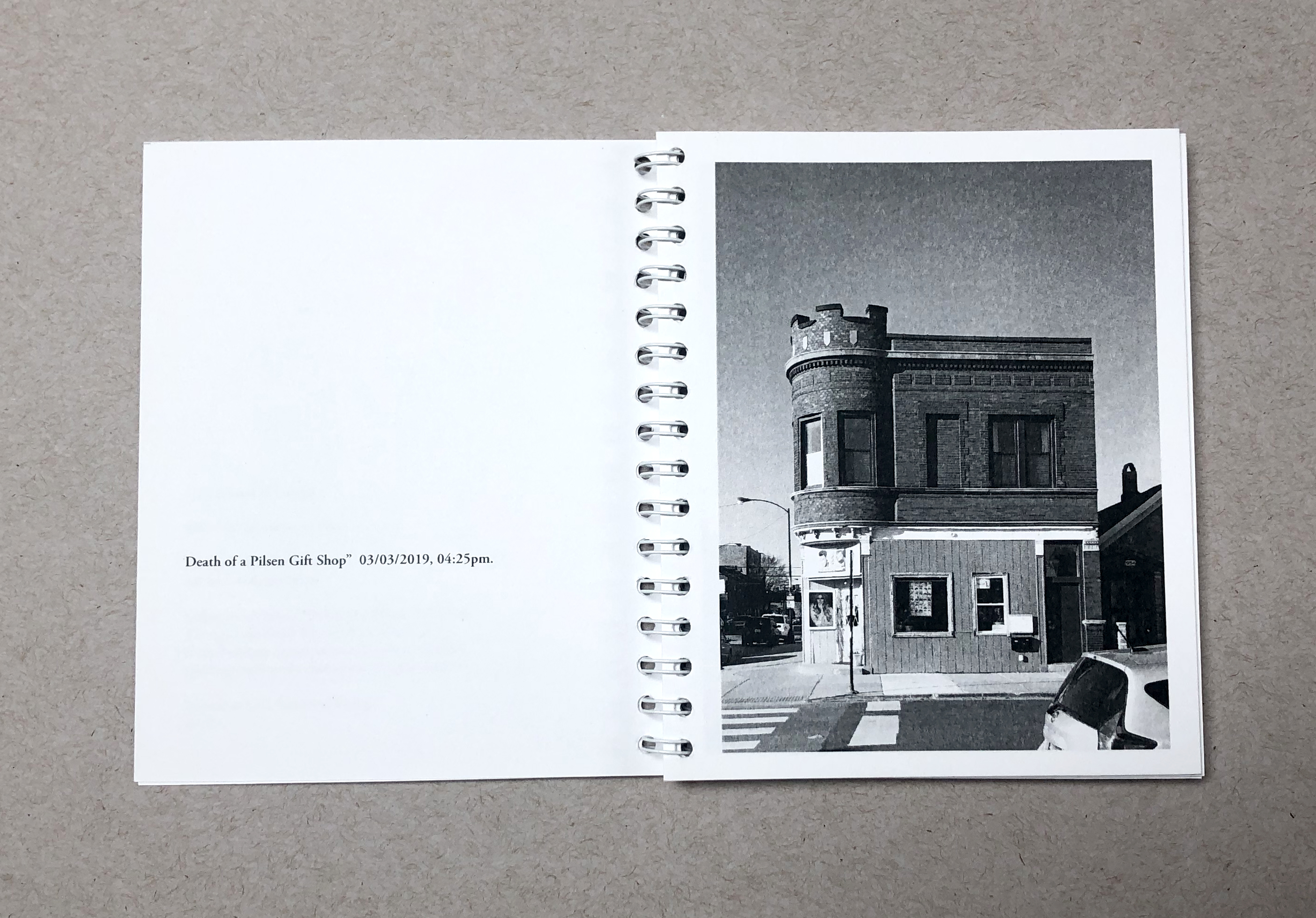
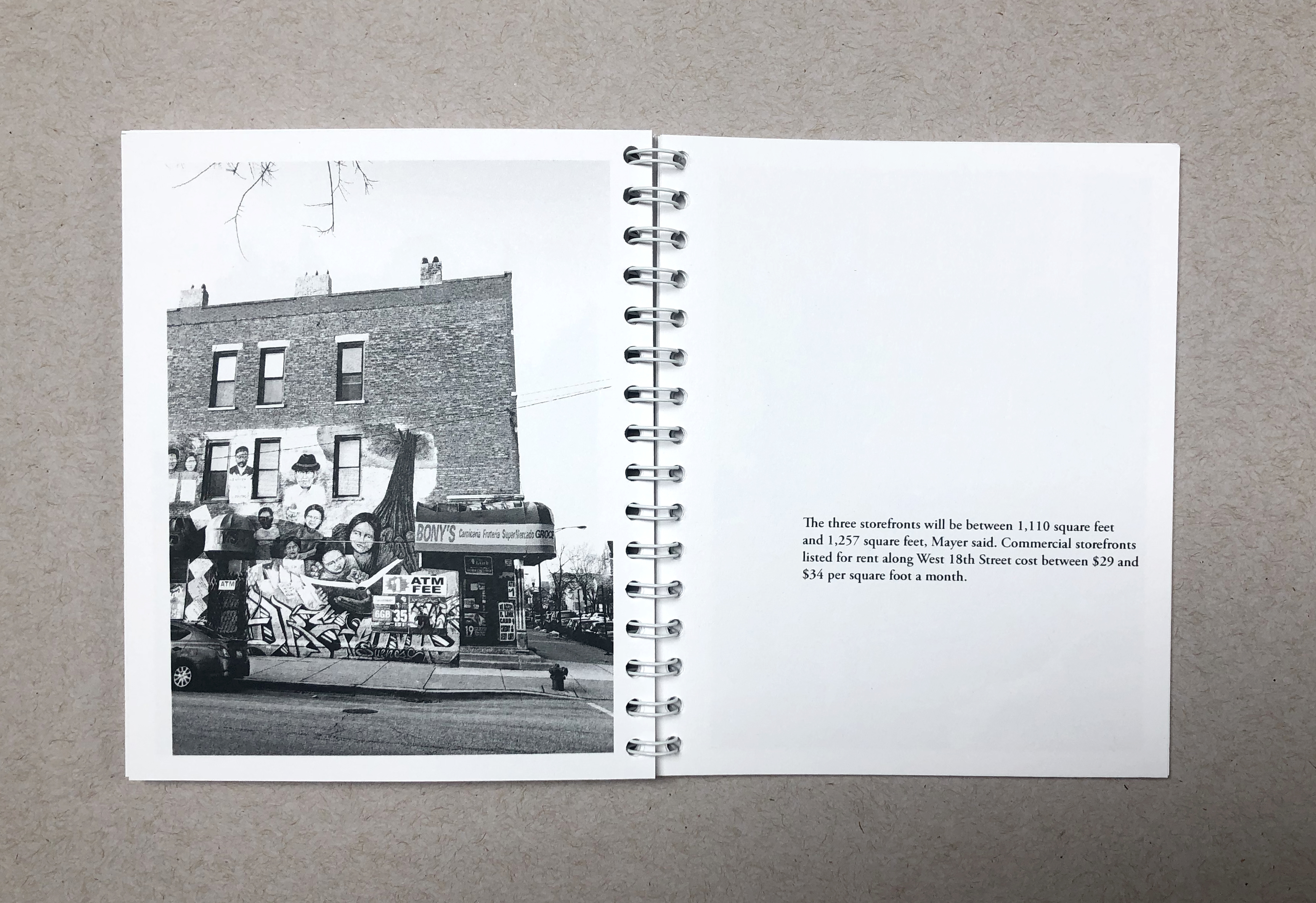
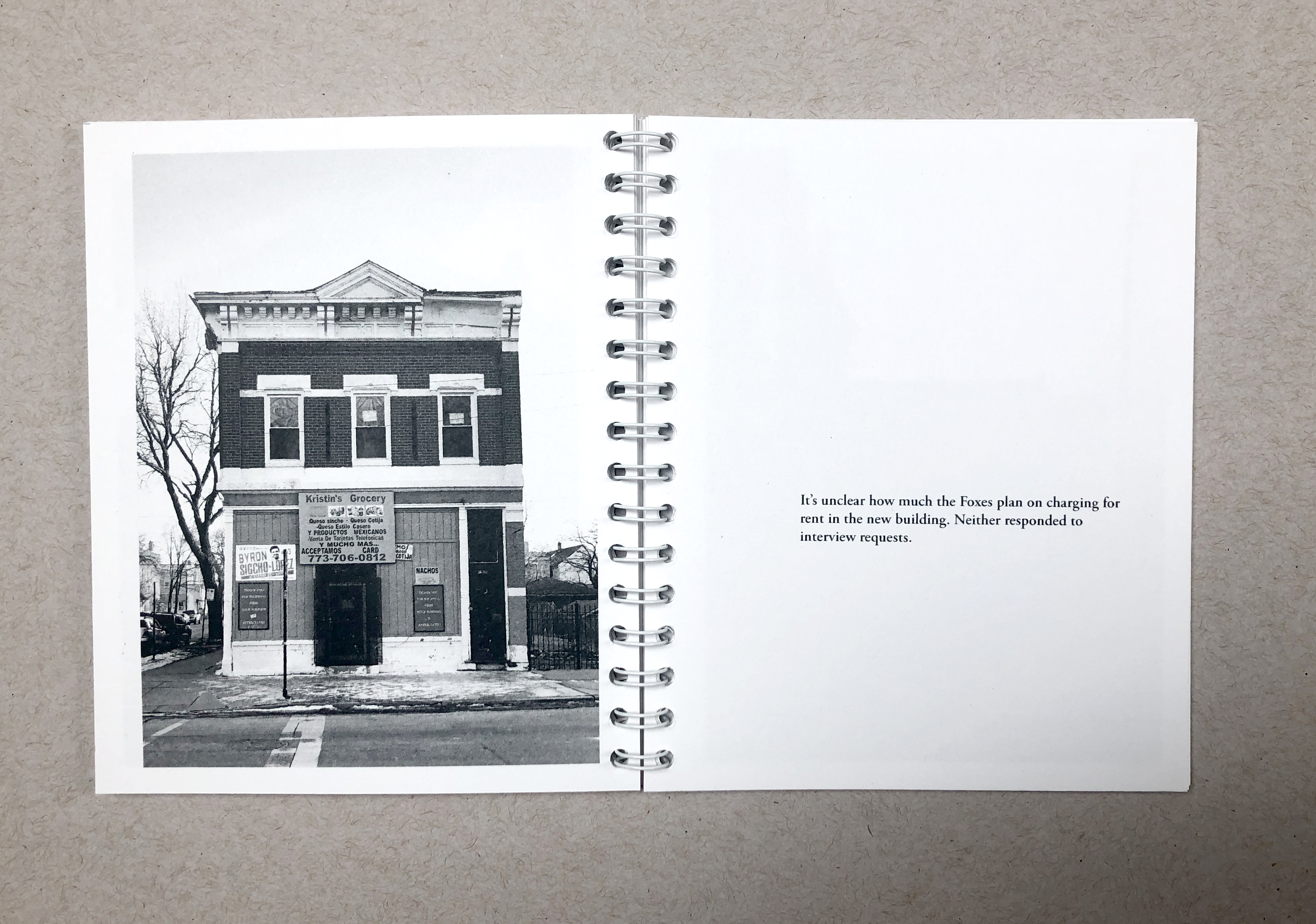

Identity of Place
This project began as a documentation of Pilsen, my neighborhood, in order to tell a story about the place’s identity. I became interested in small, locally-owned businesses, and their signage. These types of businesses feel vulnerable in a neighborhood that is experiencing change. I accumulated a series of photos documenting stores that are all named after a person, such as Karina’s Grocery or Mike’s Tire Shop, which all convey a personal connection of person to place.
The next step of that project was creating a book joining this photo series along with a news article “Death of a Pilsen Gift Shop,” which explains the end of a family-owned business, through the case study of Lili’s Gift shop, showing a series of real estate transactions and loopholes, which have resulted in a building being demolished to be replaced with luxury condos.
The article explains these mechanisms, which if understood as a pattern, reflect the neighborhood’s changing identity. In my book, I printed this article, line-for-line alongside the photos, the lines of text lining up visually where the name appears on the store’s signage, as a visual reminder to these places that may all experience similar vulnerabilities. The scale of the book was pocket sized and intimate.